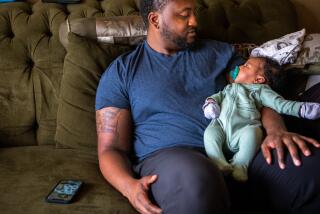Consumer devices track sleep for a better night’s rest
In a recent Royal Philips survey of nearly 8,000 people in 10 countries, 96% said that sleep is valuable to them, and 57% admitted their sleep could be better but they hadn’t taken action to improve sleep.
“We really don’t prioritize sleep the same way we do exercise and diet,” said Dr. Jeffrey Durmer, a sleep medicine expert at Atlanta’s FusionHealth. Durmer, who was not involved in the survey, said, “Sleep is how your body and your brain recover and prepare for the next day.”
The epidemic of poor sleep has energized a field of consumer products designed to monitor sleep and related elements, such as heart rate, respiration, motion or even the room’s temperature, light and noise. Whether the devices are strapped to your wrist, chest, mattress or perched on a nightstand, they aim to analyze sleep cycles and rate their quality. With Bluetooth connectivity, some sleep trackers also can sync with smartphones or tablets to create customized sleep improvement plans. A sampling of the latest:
The ResMed S+: The $150 interactive, non-contact sleep sensor sits within arm’s length of your bed and connects to a smartphone and the S+ app. The wireless device monitors breathing patterns, body movements and the bedroom’s light, noise and temperature. The app allows users to log the day’s stress level, caffeine and alcohol intake. In the morning, the app tallies a sleep score based on REM, deep and light sleep levels. A “mind clear” function records voice or text memos, so nagging thoughts can be put to bed too.
Beddit: The $149 sleep sensor is a narrow band that sits between the mattress and bedsheet. Via Bluetooth, the monitor links to a smartphone app to track heart rate, respiration, snoring, sleep cycles and sleep time, and calculate a sleep score. The app offers suggestions on how to sleep better.
The Dreampad: The pillow-based, $179 Dreampad from Integrated Listening Systems converts the electrical signals of app-supplied music into vibrations — not audible sound waves — that help the user fall asleep and stay asleep. The quilted pillow plugs into a smartphone and a Dreampad app. The vibrations are conducted through the body’s bones and trigger relaxation through the parasympathetic nervous system.
Though medical professionals have long had devices to aid and measure sleep, they’re new to consumers. The shrinking size and price of accelerometers ushered in easy-to-wear gadgets that could measure the speed and direction of motion, even during sleep. However, sleep trackers don’t always measure the same thing or use the same terminology. In January, the Consumer Electronics Assn. and the National Sleep Foundation joined forces to standardize what the devices measure to make them more useful to consumers and medical practitioners.
“Even from a doctor’s perspective, there is such a thing as too much data. We need to figure out the right way to report this information so that it is easily understandable and manageable,” said Dave Wilson, vice president of technology and standards for the Consumer Electronics Assn.






